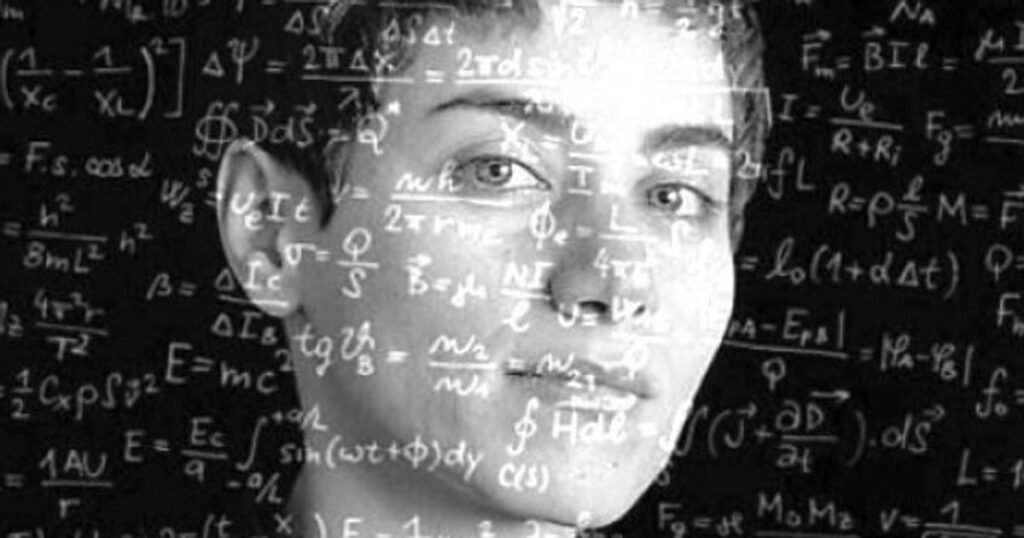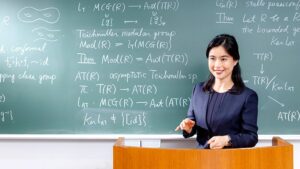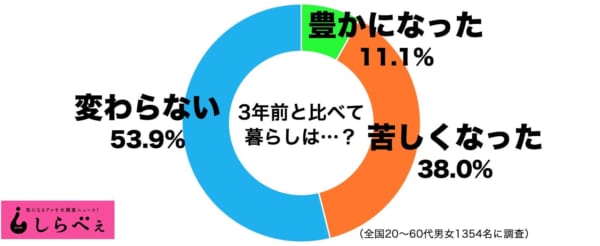
Women mathematicians have long played important roles in the world of mathematics.
From ancient times to the present, many female mathematicians have demonstrated their knowledge and talents and contributed to the development of mathematics.
However, his achievements have rarely been recognized and have often been forgotten in history.
Today, more women are active in the field of mathematics and their achievements are becoming more widely recognized.
In this article, we take a closer look at the history and current status of women in mathematicians.
This book introduces a list of notable women mathematicians from ancient times, the Middle Ages, modern times, and the present, detailing their achievements and influence in each era.
We will also touch on the achievements of female mathematicians from around the world, groundbreaking research in the field of mathematics, and support for and future prospects for female mathematicians.
We hope that through this article you will learn about the great achievements of female mathematicians and understand how they have contributed to the world of mathematics.
We also hope that this event will provide an opportunity to think about the importance of nurturing the next generation of female mathematicians and supporting them throughout society.
目次
- 1 Introduction: The history and current status of women in mathematicians
- 2 Are Japanese women bad at math?
- 3 Women mathematicians from ancient times to the Middle Ages
- 4 Modern Women Mathematicians
- 5 Notable contemporary women mathematicians
- 6 Achievements of female mathematicians from around the world
- 7 The accomplishments and influence of women mathematicians
- 8 Support for female mathematicians and future prospects
- 9 Conclusion: Towards a future for women in mathematicians
Introduction: The history and current status of women in mathematicians
The history of female mathematicians has long been obscured in a male-dominated society.
Throughout the ancient and medieval periods, women were extremely rare in academia.
However, a few great women have demonstrated their knowledge and talents and made significant contributions to the development of mathematics.
This chapter provides a detailed explanation of the historical background and current status of women mathematicians.
Historical background of women mathematicians
Women have a long history of being involved in mathematics, but the road to success has not been smooth.
In ancient Greece and Rome, women were rarely involved in academics, with the exception of female mathematicians such as Hypatia.
Hypatia was active in ancient Alexandria and is known for her significant contributions to mathematics and astronomy.
Even in medieval Europe, opportunities for women to participate in academia were limited.
Some women who were educated in convents had access to learning, but they were rarely accepted by the wider society.
For example, the 12th century German nun Hildegard of Bingen had knowledge of natural sciences and medicine but was not recognized as a mathematician.
In modern times, opportunities for women in mathematics gradually increased: in the 18th century, the Frenchwoman Sophie Germain made important contributions to number theory and the theory of elasticity.
She overcame the barriers that came with being a woman, such as publishing papers under a man’s name, to achieve great things.
Around the same time, Mary Somerville of England also contributed to popularizing mathematics and science.
Her writings have had a major influence on later scientists.
In the late 19th century and early 20th century, female mathematicians such as Emmy Noether emerged and laid the foundations of abstract algebra.
Noether’s work has important implications in many areas of physics and mathematics.
Her “Noether’s theorem” states the fundamental relationships between symmetry and conservation laws, and is one of the fundamental theories of modern physics.
Current status of women mathematicians
Nowadays, the number of female mathematicians is increasing, and their achievements are being highly praised.
The number of female mathematicians working in educational and research institutions is increasing, and their social recognition is also improving.
For example, Marina Wiazovska shook the mathematics world in 2016 when she solved the sphere packing problem.
Her research has applications in pure theory of mathematics as well as physics and materials science.
Also, Mary Whipple is a modern mathematician known for her work on the Riemann hypothesis.
Her research has provided new perspectives on this unsolved problem and has influenced many mathematicians.
Her work has been highly recognized throughout the mathematics community and she has received numerous awards.
However, gender disparities persist and more support and awareness-raising is needed.
Barriers faced by female mathematicians include social prejudice and stereotypes, as well as the difficulty of balancing work with childcare and housework.
To overcome these challenges, many universities and research institutes have established programs and networks to support female mathematicians.
Furthermore, international cooperation is also important. Improving the status of female mathematicians requires an approach that has a global perspective.
Organizations such as the International Mathematical Union (IMU) and the International Organisation for Women in Mathematics (AWM) work to recognise and support the achievements of women mathematicians.
This has created an environment in which female mathematicians have more opportunities and can demonstrate their talents.
summary
Looking back at the history and current status of women in mathematicians, we can see that the road has not been smooth.
However, their efforts and contributions have brought great advances to the world of mathematics.
Even today, support and enlightenment from society as a whole is necessary to improve the status of female mathematicians.
It is important that each of us works together to ensure that the next generation of female mathematicians can thrive.

Are Japanese women bad at math?
The relationship between women and mathematics in Japan has long been a topic of much debate.
There is often a stereotype that Japanese women are not good at math.
However, in reality, many factors influence the decision, so it is not possible to simply conclude that someone is “not good at” something.
Here, we will take a closer look at the background and current situation of how women in Japan approach mathematics.
The influence of the educational environment
The educational environment in Japan has a significant impact on interest and ability in mathematics.
Traditionally, mathematics has often been considered a “male subject”, and there has been social prejudice against women studying mathematics.
In this type of environment, women tend to feel less confident in mathematics.
However, in recent years, educational institutions and governments have been actively working to encourage more women to enter STEM (science, technology, engineering, and mathematics) fields.
In particular, gender-neutral curricula are being introduced in primary and junior high school education, creating an environment in which women can continue to have an interest in mathematics.
Social stereotypes also play a major role in why women are considered to be “bad” at math.
In Japan, there is a strong stereotype that men are good at math and science subjects.
Such stereotypes can cause women to feel uncomfortable with mathematics and discourage them from learning it.
However, many women are breaking this stereotype and achieving success in the field of mathematics.
For example, prestigious universities such as the University of Tokyo and Kyoto University are home to many outstanding female mathematicians who demonstrate their talents through their research activities.
Facts and statistics
Looking at the actual data, it’s not as if Japanese women are inferior in mathematics.
For example, in the OECD’s Programme for International Student Assessment (PISA), Japanese female students achieved high scores in mathematics.
Furthermore, many women excel in mathematics on university entrance exams.
These data show that with the right environment and support, women can thrive in mathematics.
What’s important is that society as a whole supports women’s mathematics education and breaks down stereotypes.
Introducing Nobel Prize winners
There is no Nobel Prize in mathematics, but there is one woman who has won a Nobel Prize in physics in 2014, co-won with Dr. Shuji Nakamura of Japan.
Dr Nakamura’s co-recipients, Dr Isamu Akasaki and Dr Hiroshi Amano, contributed greatly to the development of light-emitting diode (LED) technology in Japan, but there are no women recipients.
However, there have been women who have won the physics prize internationally, most notably Marie Curie of France.
She won the Nobel Prize in Physics in 1903 and in Chemistry in 1911, making her the only woman to win two Nobel Prizes.
Curie’s daughter, Irène Joliot-Curie, also won the Nobel Prize in Chemistry in 1935.
summary
The stereotype that Japanese women are bad at math stems from many factors, but actual data and current efforts show that this perception is not necessarily accurate.
Thanks to improvements in the educational environment and the overcoming of social prejudices, opportunities for women to succeed in the field of mathematics are expanding.
It is important that each of us continue to support women’s mathematics education and work to overcome stereotypes.

Women mathematicians from ancient times to the Middle Ages
Although there are few examples of female mathematicians who contributed to the development of mathematics from ancient times to the Middle Ages, there are a few exceptions.
They devoted themselves to mathematical research and education, transcending the social constraints of their time.
Here we learn more about Hypatia of Alexandria and Emma Noeter, the mother of abstract algebra.
Hypatia: Pioneer of Ancient Alexandria
Hypatia was a mathematician and philosopher who lived in ancient Alexandria.
She lived during the 4th and 5th centuries, when Alexandria was a thriving center of learning and culture.
Hypatia influenced Ptolemy’s astronomy and Descartes’ algebraic geometry, and had a great influence on later mathematicians.
Hypatia was educated by her father, Theon, and later taught herself in Alexandria.
Her lectures were highly popular and she had many disciples in the fields of mathematics, astronomy and philosophy.
Hypatia’s teachings, passed down through subsequent generations, contributed in particular to the synthesis of Neoplatonic philosophy and mathematics.
Among Hypatia’s most notable achievements was her work on conic sections.
She wrote a commentary on Ptolemy’s Almagest and made important contributions to the field of astronomy.
She also helped improve mathematical tools such as the astrolabe and the water clock.
But Hypatia’s life was not an easy one.
She was murdered by Christian extremists during an escalating religious conflict.
Her death was seen as a symbol of the decline of learning and culture in ancient Alexandria, and had a major impact on later generations of scholars.
Emma Noeter: The Mother of Abstract Algebra
Emma Noeter is a key mathematician who laid the foundations of abstract algebra. Her Noeter Theorem plays an important role in both physics and mathematics and is fundamental to many areas of modern mathematics.
Noeter was born in Germany in 1882 and was active in the mathematical world of the early 20th century.
Noeter’s most important work is his work in the field of abstract algebra.
She made groundbreaking work in ring theory, group theory, and ideal theory.
In particular, the concept known as Noetter algebra is an important theory that forms the basis of algebra.
Her research has important applications not only in pure theory of mathematics but also in the theory of symmetry and conservation laws in physics.
Noeter’s theorem states fundamental relationships regarding symmetries and conservation laws in physics.
This plays an important role especially in the theory of relativity and quantum mechanics, and is one of the fundamental theories of modern physics.
This theorem clarified the mathematical structure behind physical phenomena and influenced many physicists.
Emma Noeter’s career faced many barriers because she was a woman.
She was unable to obtain a full professorship and continued to work as an assistant professor.
However, her talent and achievements have made her widely respected in the mathematical community.
She left Germany with the rise of the Nazis and emigrated to the United States, where she died suddenly in 1935.
summary
Hypatia and Emma Noeter are two female mathematicians who made significant contributions to the development of mathematics in their respective times and places.
Their achievements have had a major influence on mathematicians of later generations and form the foundation of modern mathematics.
Learning about their lives and achievements is important for understanding the history of mathematics and also serves as inspiration for contemporary female mathematicians.

Modern Women Mathematicians
Modern female mathematicians have overcome numerous barriers and made significant contributions to the development of mathematics.
Here we introduce Sophie Germain, who made important contributions to number theory and the theory of elasticity, and Mary Cartwright, who made a major contribution to the development of dynamical systems theory.
Sophie Germain: Contributor to Number Theory and Elasticity Theory
Sophie Germain was a French mathematician active in the late 18th and early 19th centuries.
She made important contributions in number theory and the theory of elasticity, despite the social constraints of her time.
Germain taught herself mathematics at a time when it was difficult for women to obtain a formal education.
She published papers in the mathematical community using the male name “M. LeBlanc” and was recognized for her talent.
Her research led to important developments on Fermat’s Last Theorem.
In particular, Germain’s theorem was an important step in solving a particular case of this difficult problem and became the basis for later mathematicians’ work.
Germain also made important contributions to the theory of elasticity.
Her work on the theory of elasticity influenced scientists of her time and advanced applications in physics and engineering.
Germain’s work was widely recognised after her death, and her name is inscribed on the Eiffel Tower as one of the 72 greatest scientists.
Mary Cartwright: Pioneer of Dynamical Systems Theory
Mary Cartwright was a 20th century British mathematician known for her major contributions to the development of dynamical systems theory.
Her work laid the foundations of chaos theory and has influenced many areas of modern mathematics.
Cartwright studied at Cambridge University and earned a PhD in mathematics, extremely rare for a woman at the time.
She is known for her work on nonlinear differential equations in dynamical systems theory, which contributed to improvements in wartime radar technology.
In particular, Cartwright’s work played a key role in the field that would later become known as chaos theory.
She collaborated with Littlewood on analyzing the behavior of nonlinear systems.
This research has shed light on how nonlinear systems can exhibit complex and unpredictable behavior, providing new insights for many scientists and engineers.
Cartwright’s achievements were extensive, and she became the first female president of mathematics in the UK, and subsequently received numerous honours.
Her research continues to influence many mathematicians today and is fundamental to the fields of chaos theory and nonlinear dynamics.
summary
Sophie Germain and Mary Cartwright are two female mathematicians who made significant contributions to the development of modern mathematics.
Their work has had an important impact on many fields, including number theory, the theory of elasticity, and the theory of dynamical systems.
Their research continues to influence many mathematicians and scientists to this day, and they have an immortal place in the history of mathematics.
It is important to recognize the efforts and achievements of pioneers like these women and to foster and support the next generation of female mathematicians.

Notable contemporary women mathematicians
Contemporary female mathematicians have made important contributions in a variety of fields, and their influence is felt widely throughout the world of mathematics.
Here we will take a closer look at Marina Wiazovska, who solved the sphere packing problem, and Mary Whipple, who is known for her research on the Riemann hypothesis.
Marina Wiazovska: Solving the sphere packing problem
Maryna Viazovska is a mathematician from Ukraine who rose to fame in 2016 after solving the sphere packing problem.
The sphere packing problem seeks to find the most efficient way to pack spheres into a certain space, and solving it in high dimensions in particular has long been considered a difficult problem.
Wiazovska had a major impact on the mathematical world when she discovered optimal packings of spheres in 8- and 24-dimensional space.
She is best known for her papers “The sphere packing problem in dimension 8”, in which she proved the optimality of sphere packing in 8 dimensions, and “The sphere packing problem in dimension 24”, in which she solved a similar problem in 24 dimensions.
Wiazovska’s solution makes use of Heitelzbogouni’s theory and advanced mathematical tools called modular forms, and it is expected that these methods will have a major impact on future mathematical research.
Her work has had a profound impact not only on the pure theory of mathematics but also on applied fields such as information theory and physics.
Mary Whipple: A leading researcher in the Riemann hypothesis
Mary Whipple is a contemporary mathematician known for her work on the Riemann hypothesis.
The Riemann hypothesis is one of the most important and challenging unsolved problems in mathematics, involving profound theoretical implications about the distribution of prime numbers.
The solution of the Riemann hypothesis is expected to bring about major advances in our fundamental understanding of number theory.
Whipple provided a new perspective on this unsolved problem and has influenced many mathematicians.
Her research advances our understanding of the problem by introducing new approaches and techniques towards proving the Riemann hypothesis.
Her work has been published in numerous academic papers and international conferences and has been highly praised for her innovative approach.
In particular, Whipple’s work provides deep insights into the properties of the Zeta function and the distribution of its zeros.
This opened up a new avenue towards proving the Riemann hypothesis, and many researchers have since built on her approach for further research.
summary
Marina Wiazovska and Mary Whipple are two contemporary women mathematicians who have made notable achievements in their fields.
Wiazovska’s solution to the sphere packing problem has provided the mathematical community with new perspectives and tools that will continue to have a major impact on future research.
Meanwhile, Whipple’s work on the Riemann hypothesis is deepening our understanding of this perplexing problem and pointing the way to new directions throughout the mathematical community.
Their achievements are excellent examples of how women mathematicians are contributing to the development of modern mathematics and will be a great inspiration to the next generation of mathematicians.

Achievements of female mathematicians from around the world
The contributions of women mathematicians are recognised around the world and their talents are being showcased in many countries.
Here we take a closer look at the achievements of female mathematicians in the United States, Japan, and Europe.
American women mathematicians
There are many female mathematicians active in the United States, and their achievements are recognized worldwide.
In particular, the proportion of female mathematicians in educational and research institutions is increasing, and important research is being carried out in a variety of fields.
One example of an American female mathematician is Karen Uhlenbeck.
Karen Uhlenbeck was the first woman to win the Abel Prize in 2019.
Her research on gauge theory and nonlinear partial differential equations has had a major impact on modern mathematics and physics.
Uhlenbeck’s work has contributed particularly to the development of gauge theory in theoretical physics, and its influence reaches a wide range of fields.
Additionally, American universities and research institutes have many programs in place to support female mathematicians.
For example, research scholarships and mentoring programs are provided for female mathematicians to support the younger generation of women to pursue careers in mathematics.
Japanese women mathematicians
In Japan too, many female mathematicians are demonstrating their talents.
In particular, the number of female mathematicians in the younger generation is increasing, and they are experiencing more opportunities to participate in international research activities.
One example of a Japanese female mathematician is Miyuki Morita.
Miyuki Morita is a mathematician active in the field of mathematics known as topology.
Her research focuses on low-dimensional topology and her work has been highly acclaimed internationally.
She has also spoken at numerous international conferences and is an active member of mathematics education.
In Japan, efforts are underway to support female mathematicians.
For example, the “Female Researchers Support Project” led by the Ministry of Education, Culture, Sports, Science and Technology provides programs to support the career development of female researchers.
Many universities have also established research laboratories and networks for female mathematicians, providing spaces for interaction and support.
European Women Mathematicians
Europe has had many active female mathematicians since ancient times, and many outstanding research projects are still being carried out today.
Many female mathematicians are playing important roles in universities and research institutes around the world.
One example of a European female mathematician is Emmy Noether.
Emma Noeter was a German mathematician active in the early 20th century who made important contributions to abstract algebra and theoretical physics.
Noeter’s theorem states fundamental relationships regarding symmetries and conservation laws in physics, and its influence is still enormous in modern physics.
Her work is considered revolutionary in mathematical abstraction and structure theory.
Currently, there are various programs in place to support female mathematicians in Europe.
For example, the European Mathematical Society (EMS) has set up a special committee for women mathematicians to promote gender equality and diversity.
Additionally, universities and research institutes around the world offer career support and networking programs for female mathematicians.
summary
Women mathematicians in the United States, Japan, and Europe play important roles in their respective regions and have made significant contributions to the development of mathematics.
Their achievements are highly regarded in various fields of mathematics and serve as a great encouragement to the next generation of female mathematicians.
I hope that we will continue to see more female mathematicians play an active role, promoting diversity and innovation.

The accomplishments and influence of women mathematicians
Female mathematicians have carried out many groundbreaking research projects and made significant contributions to the development of mathematics.
These research projects have had a major impact not only on pure mathematics but also on applied mathematics and other scientific fields.
Below, we take a closer look at some of the representative achievements of female mathematicians and their impact.
Groundbreaking research in mathematics
Women mathematicians have carried out groundbreaking research in various fields of mathematics and their achievements have been widely recognised.
For example, Emmy Noether made important contributions in abstract algebra and theoretical physics.
Her “Noether’s Theorem” states the fundamental relationships regarding symmetries and conservation laws in physics, and has become one of the foundations of modern physics.
Sophie Germain also made important contributions in number theory and the theory of elasticity.
Her work on Fermat’s Last Theorem laid the foundation for the work of later mathematicians.
In addition, Gell-Mann’s work on the theory of elasticity had important applications in other engineering fields such as materials science and structural mechanics.
In modern times, Maryna Viazovska has attracted attention for her solution to the sphere packing problem.
Her work has had a major impact not only on pure mathematics theory but also on information theory and materials science.
In this way, female mathematicians have played an indispensable role in the development of mathematics in every era.
Impact on science and technology
The achievements of female mathematicians have also had a major impact on the development of science and technology.
In particular, in fields such as data analytics and computer science, the research of women mathematicians is laying the foundations for new technologies.
For example, Grace Hopper was a pioneer in computer science who helped develop the first compiler.
Her work played a key role in the development of programming languages and the evolution of computer science.
Katherine Johnson also played a key role in orbital calculations at NASA, contributing to the success of the Apollo program.
Her mathematical calculations are directly linked to the safety and success of spaceflight and their impact is immeasurable.
Additionally, women mathematicians are conducting important research in the field of data science.
For example, Cynthia Dwork is known for her research on data privacy and algorithms, and her work has been essential to modern data protection technology.
The influence of female mathematicians extends beyond mathematics to science and technology in general.
Their research lays the foundations for the development of new technologies and scientific discoveries, making significant contributions to the progress of society.
Achievements such as these are a great encouragement to the next generation of female mathematicians, helping to expand their future possibilities.
summary
Women mathematicians have played a key role in groundbreaking research in mathematics and in the development of science and technology.
Their work has had a major impact across a wide range of fields, including pure mathematics, applied mathematics, data science, and computer science.
I hope that female mathematicians will continue to be active and that their achievements will be even more widely recognized in the future.

Support for female mathematicians and future prospects
Education and career support are important to increase the number of female mathematicians.
Many universities and research institutions have implemented support programs for female students and young researchers.
Here we will provide a detailed explanation of the current support situation as well as future challenges and prospects.
Current status of education and career support
Support from educational and research institutions is essential to nurturing female mathematicians.
Many universities have implemented programs to enhance mathematics education for female students.
For example, mathematics camps for high school girls and lectures by female mathematicians are held regularly.
This helps spark an interest in mathematics among young women and encourages them to consider it as a future career.
Furthermore, research institutions are also working to provide career support for female mathematicians.
Many universities and research institutes offer scholarships and research grants to female researchers, creating an environment in which young researchers can continue their research with stability.
For example, the National Science Foundation (NSF) in the United States and the European Research Council (ERC) in Europe offer special support programs for female researchers.
Also important is a platform to support networking among women mathematicians.
Many international societies and professional organizations offer networking events and mentorship programs for women mathematicians to help them advance in their careers.
This provides young female researchers with more opportunities to connect with more experienced senior researchers and receive advice and support.
Future challenges and prospects
There are still many challenges to overcome in improving the status of female mathematicians. First of all, rectifying the gender gap is an important issue.
While many countries are making progress in providing women with educational opportunities and career support, male-dominated cultures and stereotypes still exist.
To overcome this, it is necessary to raise gender awareness in educational settings and the workplace.
Support at the policy level is also important, and active efforts are required from governments and educational institutions.
Next, there is a need to strengthen networks among female researchers. Currently, many female researchers tend to feel isolated and lack connections with colleagues and mentors.
To improve this situation, it is necessary to increase opportunities for female researchers to come together and provide events and platforms that foster interaction.
In particular, it is important to create an environment in which female mathematicians can receive broader support by building an international network.
Furthermore, it is also important to improve the research environment. Flexible working arrangements and improved research support services are needed so that female researchers can continue their research while balancing their family and childcare responsibilities.
This will enable talented female researchers to continue their research activities without interrupting their careers.
summary
We have looked at support for female mathematicians and future prospects. While steady progress has been made in the current state of education and career support, many challenges remain.
Various efforts are required, including correcting gender disparities, strengthening networks, and improving research environments.
It is hoped that if each of us raises our awareness to support female mathematicians and takes concrete action, we can create a society in which more women can thrive in the field of mathematics.

Conclusion: Towards a future for women in mathematicians
To build a future for female mathematicians, it is essential to educate the next generation and improve their status from a global perspective.
With support from educational institutions, families, and society as a whole, we need to create an environment in which more women can demonstrate their talents in the field of mathematics.
Nurturing the next generation of female mathematicians
To nurture the next generation of female mathematicians, support is needed from educational institutions, families, and society as a whole.
In particular, there is a need to improve mathematics education for the younger generation.
Here are some specific initiatives to develop the next generation of women mathematicians:
-
Review of the educational curriculum : It is important to eliminate gender bias in mathematics education and provide equal learning opportunities to both men and women. In particular, improving the quality of mathematics education from elementary school to high school will help women to continue to have an interest in mathematics.
-
Introducing role models : It is important to introduce the achievements of outstanding female mathematicians and provide role models for the younger generation of women, so that women can have a concrete image of themselves succeeding in the field of mathematics and become more motivated for their own future.
-
Family and community support : Education at home and community support are also essential. Parents and communities can actively get involved in girls’ mathematics education and create a good learning environment to support girls’ motivation to study mathematics.
-
Expanding scholarships and support programs : It is important to expand scholarships and support programs for female mathematicians in order to remove economic barriers and enable more women to receive higher education in mathematics.
Improving the status of female mathematicians from a global perspective
Improving the status of female mathematicians is also a global issue.
It is important to create an environment in which female mathematicians can further play an active role through international cooperation and networks.
Here are some global initiatives:
-
Promote international collaboration : International organizations such as the International Mathematical Union (IMU) and the International Association of Women in Mathematics (AWM) need to work together to promote the advancement of women in mathematicians, so that national success stories and best practices can be shared and progress can be made at a global level.
-
Organizing international conferences and workshops : By hosting international conferences and workshops that bring together women in mathematicians, we provide opportunities for networking, collaboration, and information exchange, thereby strengthening the female community and creating an environment of mutual support.
-
Strengthening support at the policy level : It is important for governments to take concrete steps to support women mathematicians at the policy level, for example by establishing laws that promote gender equality and providing incentives to encourage the recruitment of more women researchers.
-
Utilizing online platforms : It is also important to utilize online platforms to create an environment where female mathematicians can collaborate globally, which will advance information exchange and collaborative research beyond geographical constraints.
summary
To build a future for female mathematicians, support is needed from educational institutions, families, and society as a whole.
In particular, there is a need for international cooperation to improve mathematics education for the younger generation and to enhance the status of female mathematicians.
By each and every one of us supporting female mathematicians and encouraging their success, we can create a society in which more women can demonstrate their talents in the field of mathematics.


